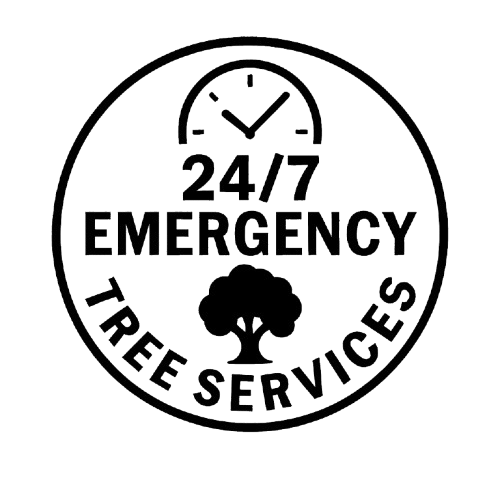Protecting Street Trees During Construction Projects
Street trees are essential to New York City’s urban environment, providing advantages such as improving neighborhood aesthetics, noise pollution, and air quality. They provide shade on hot summer days, contribute to the city’s biodiversity, and even help manage stormwater runoff. However, these vital assets are often at risk during construction projects. Construction activities can cause irreversible damage to trees without proper protection, affecting their health and longevity. Protecting street trees during construction isn’t just an environmental concern—it’s also a legal obligation in NYC. Understanding how to safeguard these trees is essential for contractors, developers, and community members committed to preserving the city’s green infrastructure. Key Takeaways: Strict Compliance with NYC Regulations is Mandatory: Before initiating construction work near street trees, obtaining the necessary permits from the NYC Parks Department is crucial. The city has specific laws designed to protect trees, and non-compliance can result in significant fines and legal consequences. Adhering to these regulations not only avoids penalties but also contributes to the sustainability of the urban ecosystem. Effective Tree Protection Measures are Essential: Implementing comprehensive protection strategies is vital in preserving tree health during construction. This includes installing physical barriers like sturdy fencing to create Tree Protection Zones (TPZs), using mulch to protect root zones, and minimizing soil compaction by controlling machinery and foot traffic near trees. Such measures help prevent physical damage to roots, trunks, and canopies, ensuring trees remain healthy throughout construction. Collaboration with Certified Arborists Enhances Tree Preservation: Engaging a certified arborist from the planning stage through project completion provides expert guidance on tree protection. Arborists can conduct thorough risk assessments, recommend best practices tailored to specific site conditions, and monitor tree health during and after construction. Their expertise increases the likelihood of trees surviving the stress of nearby construction activities and contributes to the long-term vitality of the urban forest. NYC Street Tree Protection Laws and Regulations Protecting street trees during construction projects in New York City is an environmental responsibility and a legal requirement. The NYC Parks Department enforces strict regulations to ensure that street trees are preserved and cared for during nearby construction activities. Key Regulations from the NYC Parks Department Tree Work Permits: Any work affecting a street tree requires a permit. This includes pruning, removal, planting, or construction activities that might impact the tree’s health. Tree Protection Specifications: Contractors must adhere to the “Tree Protection Specifications for Capital Projects,” which outline the standards for safeguarding trees during construction. This includes installing physical barriers and guidelines for working near root zones. Compliance with Arboricultural Practices: All tree work must follow the best practices outlined by the International Society of Arboriculture (ISA) and the American National Standards Institute (ANSI) A300 standards. Permit Requirements for Construction Near Trees Application Process: Contractors or property owners must submit a Tree Work Permit application to the NYC Parks Department, detailing the scope of work and its proximity to nearby trees. Site Plans and Documentation: The application should include site plans illustrating the location of trees relative to the construction zone, proposed protection measures, and any anticipated impacts on the trees. Approval and Conditions: Once reviewed, the Parks Department may approve the permit with specific conditions, such as installing protective fencing or limiting excavation near root zones. The Role of Arborists in Ensuring Tree Health Assessment and Planning: Arborists thoroughly assess the trees before construction begins, identifying potential risks and recommending protection strategies. Implementation of Protection Measures: They oversee the installation of physical barriers, such as fencing around the Tree Protection Zone (TPZ), and ensure that all protective measures comply with city regulations. Monitoring and Maintenance: Throughout the construction process, arborists monitor the health of the trees, adjusting protection strategies as needed and addressing any signs of stress or damage. Post-Construction Care: After the project, arborists may provide care recommendations to help trees recover from any impacts, such as pruning, mulching, or specialized treatments. Penalties for Non-Compliance Fines: Severe fines could be imposed for violations. For example, depending on the severity of the act, penalties for illegally taking down or injuring a street tree can range from several hundred to tens of thousands of dollars. Restitution Costs: Offenders may be required to pay for the appraised value of the tree, including the cost of removal, replacement, and maintenance of a new tree. Legal Action: In severe negligence or willful damage, legal action may be taken against the responsible parties, potentially leading to court proceedings and additional penalties. Work Stoppages: The NYC Parks Department has the authority to issue stop-work orders on construction projects that do not comply with tree protection regulations, causing delays and additional costs. Common Risks to Street Trees During Construction Street trees are vulnerable to various forms of damage during nearby construction activities. Recognizing these risks is essential to implement effective protection measures and ensure the trees’ long-term health. Physical Damage to Roots, Trunks, and Canopies Root Damage: Excavation and trenching can sever or disturb tree roots, which are critical for water and nutrient absorption. Root damage can also reduce stability, making trees more susceptible to toppling. Trunk Injuries: Construction equipment and materials can scrape or wound the tree’s trunk. Such injuries can become entry points for diseases and pests, compromising the tree’s structural integrity. Canopy Damage: Overhanging branches may be broken or improperly pruned to accommodate construction equipment, affecting the tree’s ability to photosynthesize and leading to an unbalanced structure. Soil Compaction and Its Impact on Tree Health Reduced Soil Aeration: Heavy machinery and increased foot traffic can compact the soil around trees, decreasing pore space necessary for oxygen exchange and water infiltration. Impeded Root Growth: When the soil is compacted, a tree’s ability to obtain nutrients and water is restricted because it becomes denser and hinders root growth. Water Stress: Compaction can alter the soil’s drainage properties, leading to soggy conditions or drought stress, negatively impacting tree health. Changes in Water Drainage and How It Affects Trees Altered Hydrology: Construction activities can change the natural flow of surface and subsurface water, depriving




